Healing the Wounds of Otter Creek
Acadia Park Commission Denies Small Land Request; Other Selectboard News
OTTER CREEK—For Mount Desert Town Manager Durlin Lunt, some things are about commitment and so he keeps coming back to Acadia National Park’s Advisory Commission and asking for what he sees as a little bit of justice, of reparation, of acknowledgment of a community.
Lunt is a man who quotes Roosevelt and Kennedy, who reads and thinks and listens and thinks some more. He’s also a man who is passionate about Otter Creek, one of the villages within Mount Desert. He’s not alone. Others, like Stevie Smith, have crusaded about the community, its fish houses, and its people for decades.
For many, Otter Creek is an easy place to be passionate about.
A marker erected by the National Park Service reads,
“Since the early 1800s, Otter Creek has been the site of a fishing village with wharfs and fish houses on the waterfront and homes on the hills. Residents caught fish, dried them on racks along the cove, and shipped them to Boston and other cities. Families also sold lobsters, worked in granite quarries, cut firewood, farmed, and later, provided services for summer residents and tourists. Today this community is completely surrounded by Acadia National Park. For some residents this adds scenic values and quiet to their lives, but for others this causeway impedes access to the inner cove by boat and disrupts traditional patterns of fishing. Although most of the old fish houses are gone, generations of the same families still live here. Today, the Aid Society of Otter Creek promotes community life and preserves historic buildings in the village.”
The marker explains a part of why Lunt, Smith, and others are so passionate and why they’ve come back to Acadia National Park’s Advisory Commission to ask for some help to honor the village, its people, and its history and maybe find a way to restore a little of its way of life.
A BIT OF LAND
On Monday, the Acadia National Park Advisory Commission did not honor a request from the town of Mount Desert for a 3,000-square feet piece of land owned by Acadia National Park in the village of Otter Creek without an encumbrance of land, commonly called a land swap.
The amount of land is basically 55 feet by 55 feet. It’s .052 of a football field, including the end zone. It’s .63 of an NBA basketball court.
The land in question is adjacent to the boat launch on Grover Avenue in Otter Creek. The town wants it for the purpose of expanding vehicular access to the municipal facility.
Lunt made the original request in February. A subcommittee of the Commission, led by Darron Collins, met in March via Zoom, and Collins announced on Monday, June 3, that the subcommittee decided that any request must occur via a land swap. This typically occurs via an act of Congress. The Commission advised Lunt to have the town make a request of its federal representatives.
The Commission accepted the report, with one opposed. No further action was taken.
“We considered the ecological footprint and the cost,” Collins said.
The subcommittee considered the current use as well as the discussion at the larger committee’s February meeting, which was when Lunt asked for the small parcel. The park has no authority to simply give away land, Collins said. National park lands are of national interest and any expansion should be part of a land swap unanimously approved, the other Commissioners agreed.
Mount Desert’s request was for enough land to the buildout for the Otter Creek turn-around in the landing. More access would likely mean more use.
Currently, the site is difficult to access and goes down a sharply angled dirt and gravel path parallel to Otter Creek and to the cove. During high tide, it is impossible to turn a vehicle around. During low tide, it’s pretty close to impossible as well. In 1993, Mount Desert received an easement from ANP to build a boat launch and pier. It was acquired via a land swap. That’s the route the Commission says the town will have to proceed with again.
“The facility, at this point in time, is inadequate,” Lunt said. It is used for small boats, dinghies, kayaks, canoes.
“That door is closed. The Congressional delegation door is closed as far as getting a donation,” Lunt told Selectboard members Monday evening. “So, it looks to me like that is going to be a dead end street.”
If the town wants to proceed, Lunt told the Selectboard, it might want to look at a land swap. The initial intent is to not change the borders of Mount Desert. Perhaps, he said, someone might donate land outside Mount Desert’s borders or the town might find a piece of its own land, outside its borders, to swap. As it is now, it seems that the town doesn’t want to lose any more of itself.
There is a piece of land owned by the College of the Atlantic by the fish house. It has some environmental issues. But if the college was willing to donate to the park or the town to give to the park so that the park could give it the land to create a turnaround, that would be ideal, he said.
FOUR POINTS
Lunt explained on Tuesday that he had four main points that he wanted to address with Acadia National Park to “help heal some of the wounds of Otter Creek.”
He joked, “Wilson had 14 points at the Versailles Conference, but the office of town manager is far less grandiose than that of President.”
But those four points are significant.
The first is if the National Park Service would consider building the turn-around itself or consider leasing the land to Mount Desert and it would build and maintain the project that would allow easier access to the cove.
The second is a plea for Acadia to restore any of the traditional village trails that were abandoned following the 1936 Rockefeller acquisitions.
He also said that there should be vista clearing to allow Otter Creek Harbor to be viewed from Grover Avenue, which has been a vista in the past.
Finally, he would like for the park's visitation center(s) to have an “historical interpretation of the land acquisition that comprises current day Acadia, including the irregularities uncovered concerning the Rockefeller acquisitions. No true history of the Park can be told without telling this side of the Park's history, just like no history of the Nixon Administration can be told without referencing Watergate.”
“There is no reason why that (knowledge) can’t be more widely disseminated,” he said. History, he said, has to be accurate and it has to be fair.
OTTER CREEK HISTORY
Back in 1936, Mount Desert’s Warrant Committee voted to indefinitely postpone Article 33 at town meeting. That article said that the town would discontinue the use of the town way and town landing to Otter Creek. The vote came at the height of the Great Depression.
“Work was hard and times were tough,” Lunt said in February.
A lot of people at that 1936 meeting, he said, were under the employ of John D. Rockefeller. Rockefeller wanted the waterfront to be part of the park. He also wanted the cove to be a swimming area.
Land was given. The causeway was built.
Lunt said that the current access to Otter Creek Harbor has limitations and the harbor itself is dry at low tide, but before that land acquisition, it had an active quarry, schooners, fishing, and was a working waterfront. It still has one or two fisherman.
A working waterfront ended, he said. But it could return, if it was allowed to return.
“We can’t predict to what extent, to what degree, what commercial and recreational activities might be enhanced,” Lunt said if decent access to the harbor and cove returned.
It’s a resource, he said, that should be addressed by the park. On Monday he asked the Commission to honor its responsibility to preserve that culture, including the culture of Otter Creek.
“I’ll go as often as I have to,” Lunt said.
He’ll be back in September to the Commission to talk about it again.
THE MISSIONS OF THE PARK AND THE COMMISSION ITSELF
For some with longer memories, swapping land to restore better access to the Otter Creek’s working cove stirs up hard feelings.
Acadia National Park has two dual missions, Lunt said: to preserve natural resources but to also preserve the cultural resources within the park’s borders.
“We all know that the relationship with the National Park Service is complex,” Lunt said. And it can be problematic in other areas of the country. Most, national parks, are not integrated with communities but sit off by themselves.
Urban parks are those that are surrounded by communities. Acadia National Park, despite its rural nature, is one of those parks.
“They are charged with working with the communities that do border them, that do surround them, to try to preserve those cultural and historic relationships,” Lunt said. “The Otter Creek situation is particularly challenging because of the loss of its greatest natural resource.”
This was a trauma then, he said. The harbor was taken away with the Rockefeller acquisition. And Lunt said that there were irregularities in the process.
“The town really dropped the ball in 1936,” he said Monday evening. That was when the town dropped its right-of-way to the Otter Creek harbor.
Rockefeller’s attorney’s said that it was an illegal warrant article because the town didn’t have the authority to get rid of a right of way, Lunt continued.
“When I was growing up, there were a number of people alive who remembered that process and kind of remembered that it was kind of strange,” Lunt said.
And Lunt? And so many other residents of Otter Creek, and their families, some who have moved away and some who have stayed? They remember, too. Part of their mission, maybe that fifth point, might also to make sure that not everybody forgets.
The Commission’s purpose, according to the website is:
“The purpose of the Commission is to advise the Secretary of the Interior through his designee, the superintendent, Acadia National Park. The superintendent shall conduct with and request the advice of the Commission on matters relating to the management and development of the park including, but not limited to, each of the following:
“The acquisition of lands and interests in lands (including conservation easements on islands).
“Termination of rights of use and occupancy.”
THE CAUSEWAY
During the commissioner’s meeting Monday, it was mentioned that the repairs to the stone causeway were being done one section at a time.
According to Public Affairs Director Amanda Pollock, “The causeway is part of the Park Loop Road, which is listed on the National Register. Therefore, the NPS preserves the fabric of the road so it maintains its historic integrity from the coping stones to the causeway.”
One project is routine historic preservation, including the preservation of the barrels, repointing the stone work, etc.
“The second thing we are doing is trying to figure out if any of the January storms caused any additional structural damage to the causeway,” Pollock said. “We will use ground penetrating radar to assess the structure, and decide how to move forward from there.”
OTHER SELECTBOARD BUSINESS
The Mount Desert Selectboard made quick work of much of its regular meeting, June 3, ending in less than 25 minutes.
The group made quick work of multiple items on its agenda including, appointing Georgeann Snead to the Economic Development Committee as the Chamber of Economic repesentative to the committee; accepting the resignation of Griffin Costello—Sanders as firefighter/AEMT as of May 27, approving the May 21 Shellfish Committee minutes, allowing the Mount Desert Elementary School’s eighth grade promotion for June 6 from 4 to 7 p.m. on the Northeast Harbor Village Green; a wedding on Suminsby Park, and the use of Dobbs Productions to use public access channel 13-1 for summer 2024 and winter 2025.
The board began the review of three ordinances of the Mount Desert Charter including: Floodplain management, plumbing permit fee, sale of food and merchandise including sing-use carryon bags, polystyrene foam food service, and quarry licensing.
The board also introduced itself to Jack Stroud, the new Mount Desert beat reporter for the Mount Desert Islander.
This article has been updated to include information from Amanda Pollock.
LINKS TO LEARN MORE
https://www.mtdesert.org/selectboard
packet for selectboard meeting
NPR article about dueling mandates of national parks
If you’d like to donate to help support us, you can, but no pressure! Just click here.


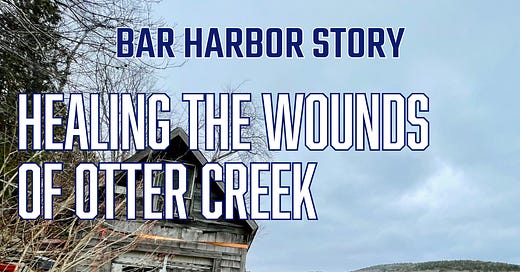






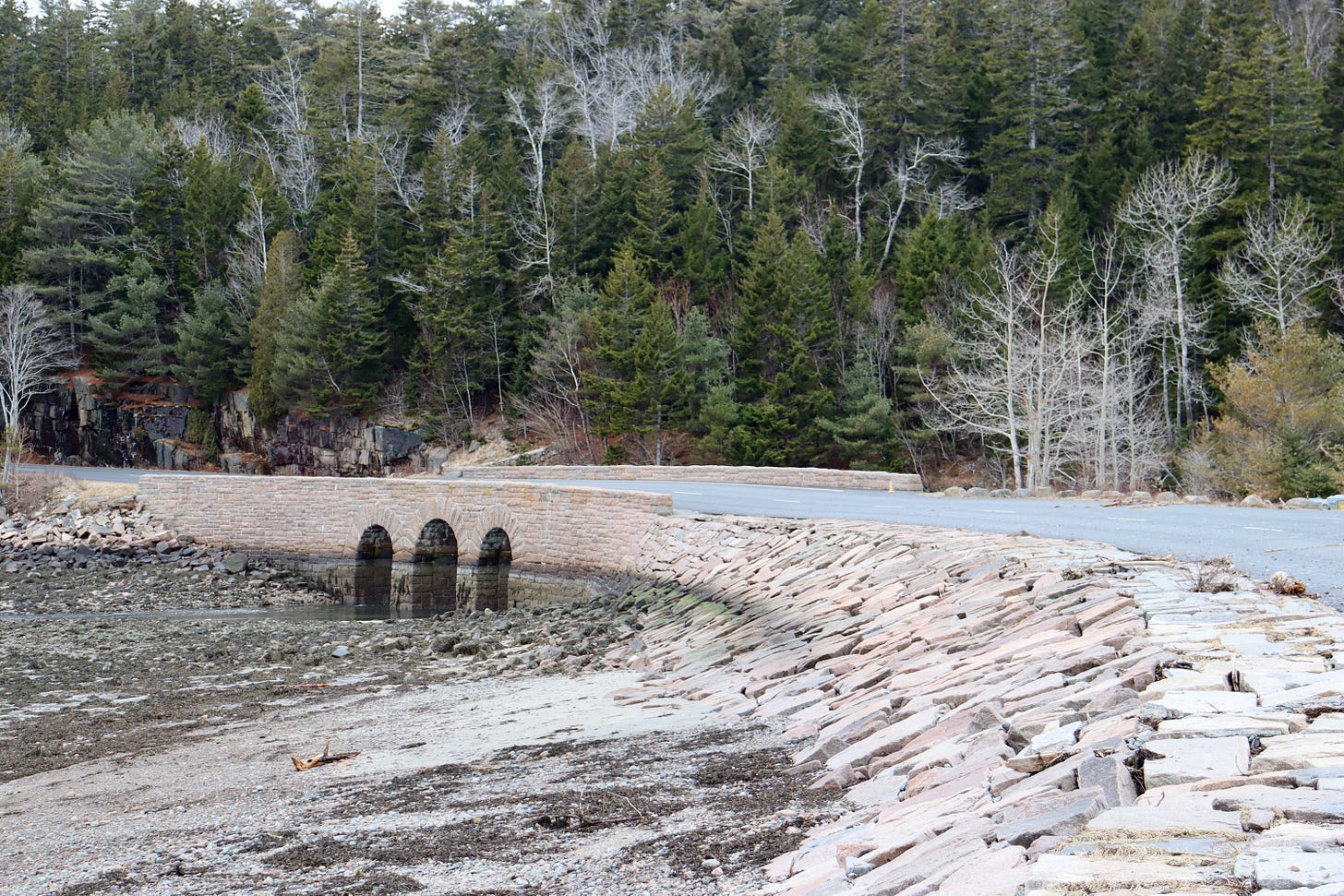
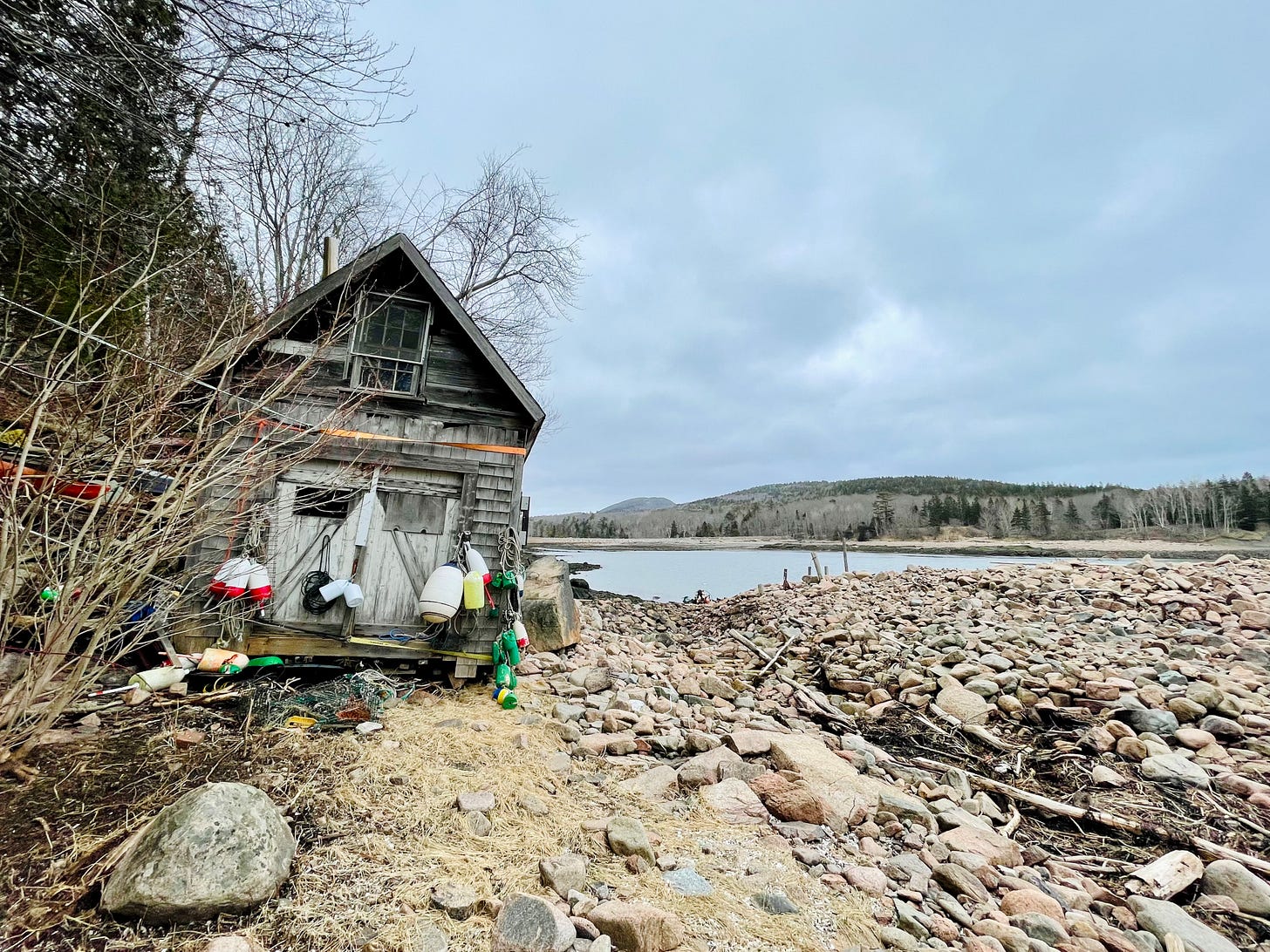
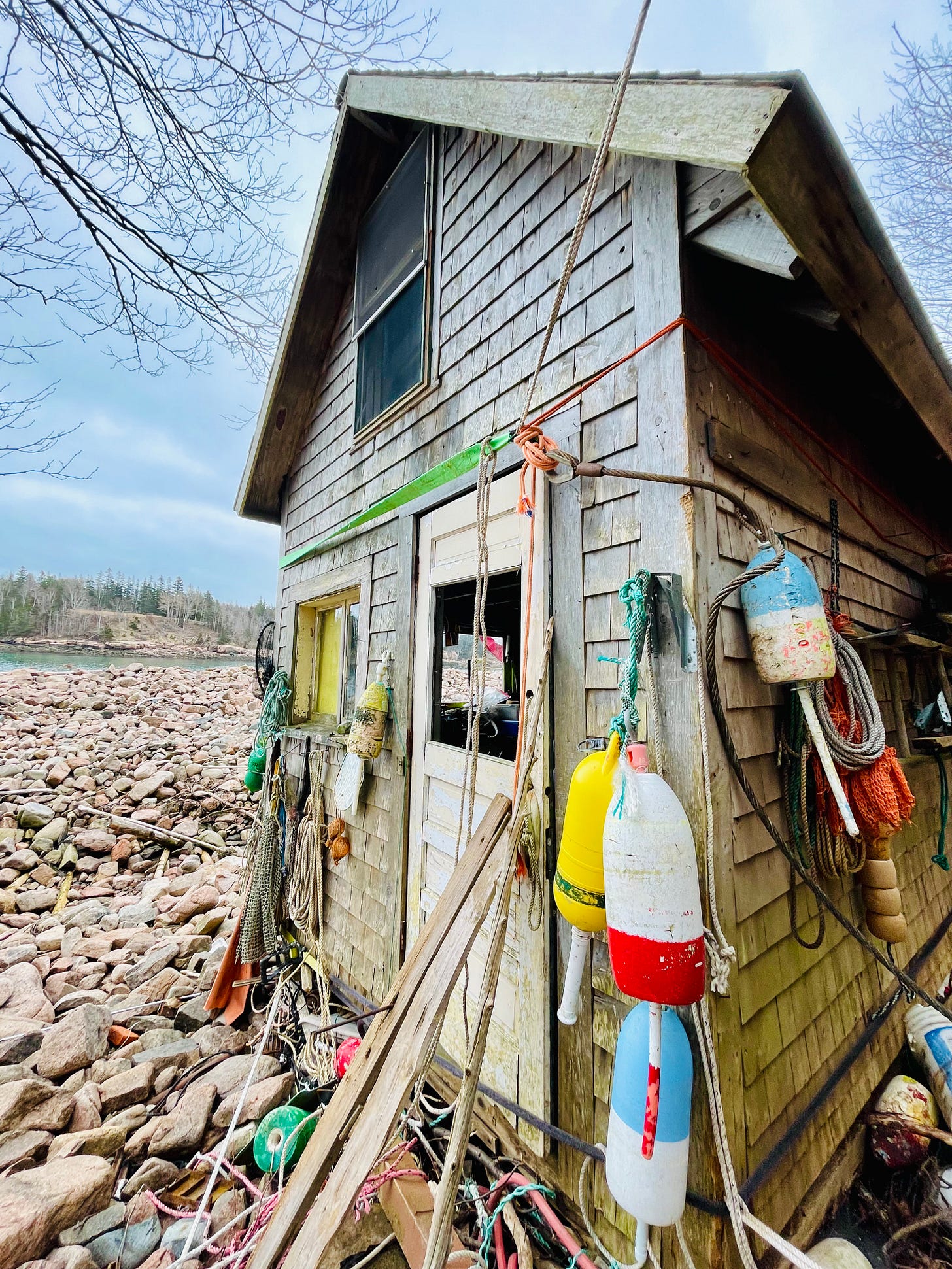


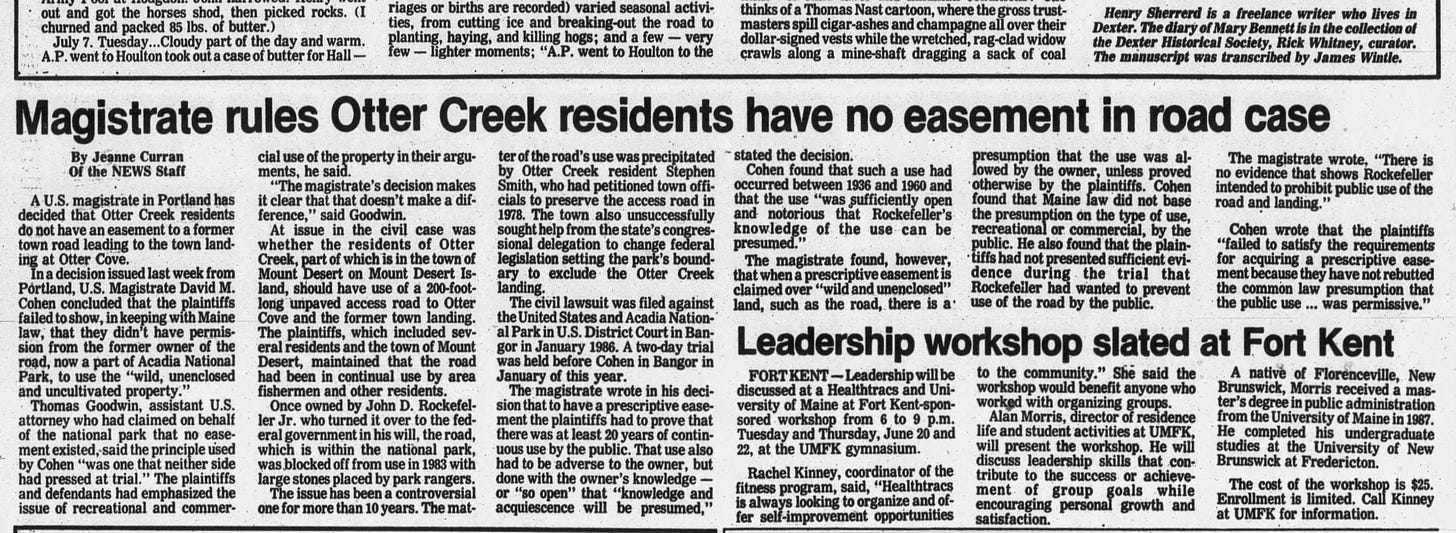

The 1911 Path Map of Eastern MDI does not show Acadia National Park's boundaries. Neither the National Park nor the National Monument existed at the time. The green shaded areas of the map are probably lands belonging to the Hancock County Trustees of Public Reservations.